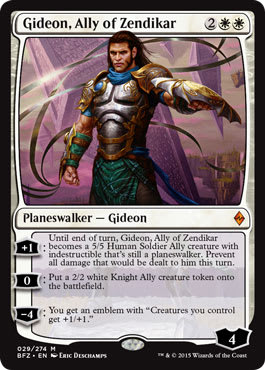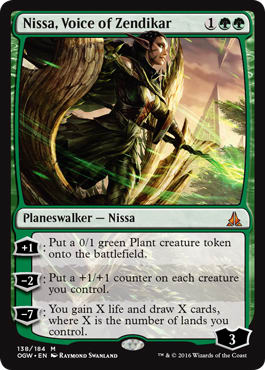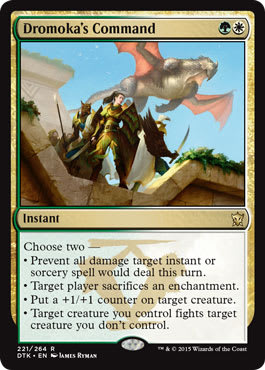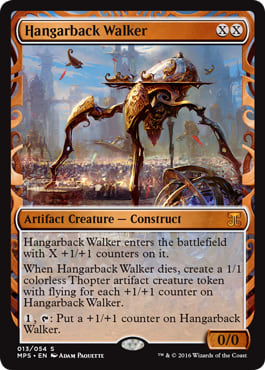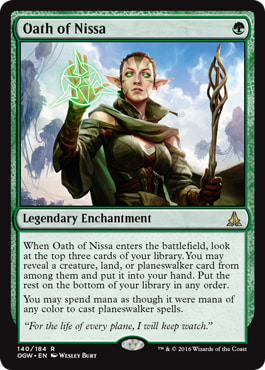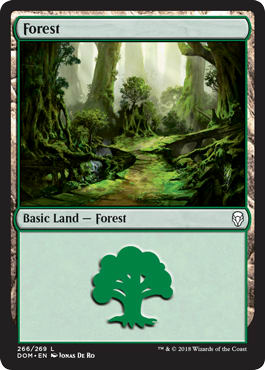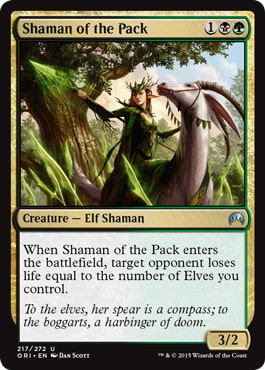Picture your current deck of choice. Whatever format you prefer playing at the moment —it doesn’t really matter— just imagine the deck you play.
Now, put yourself in the first round of a tournament with that deck. Think of yourself drawing an opening hand of seven cards. What does the ideal hand look like? Does it have a curve of removal spells into an end-game threat a la Kalitas, Traitor of Ghet? Perhaps it is able to put Goblin Charbelcher into play on the first turn and kill the opponent. On the other side of the coin, it could want to use Lantern of Insight, Ghoulcaller's Bell, and Ensnaring Bridge to make sure the opponent never truly gets to play Magic before they lose the game.
All of these have one important thing in common: They have a plan. They each know what they are planning to do in the beginning of the game in order to emerge victorious over their opponent by the match’s conclusion. Today’s Standard format puts a heavy weight on executing a plan early in order to gain an on-board advantage. This advantage generally tends to snow-ball into an insurmountable board-state which threatens to end the game almost immediately.
Last week, I wrote a bit about the history of G/W Tokens in Standard; and, in the process of writing the piece, I fell in love with the deck. After a great deal of research, zero actual games with the deck, and a little bit of Friday night smack talking via Twitter, I submitted the following 75 for the SCG Open in Atlanta:
G/W Tokens, Shadows Over Innistrad Standard, Emma Handy, 24th Place SCG Open
- Creatures (14)
- 2 Lambholt Pacifist
- 4 Archangel Avacyn
- 4 Hangarback Walker
- 4 Sylvan Advocate
- Planeswalkers (8)
- 4 Gideon, Ally of Zendikar
- 4 Nissa, Voice of Zendikar
- Spells (13)
- 2 Secure the Wastes
- 4 Dromoka's Command
- 1 Declaration in Stone
- 1 Evolutionary Leap
- 1 Stasis Snare
- 4 Oath of Nissa
- Lands (25)
- 7 Plains
- 8 Forest
- 2 Westvale Abbey
- 4 Canopy Vista
- 4 Fortified Village
- Sideboard (15)
- 2 Linvala, Keeper of Silence
- 2 Tragic Arrogance
- 1 Aerial Volley
- 1 Evolutionary Leap
- 1 Clip Wings
- 2 Silkwrap
- 2 Angelic Purge
- 2 Den Protector
- 2 Declaration in Stone
While I came close to Top 8-ing, I made some deck-building mistakes which directly resulted in losing a pair of heartbreaking win-and-ins. Over the course of the tournament, the games I played were incredibly valuable for learning more about the pace of Standard.
At its core, the G/W deck is an aggressively-slanted Midrange deck. This is to say, against the aggressive strategies this archetype can go on the defensive until the powerful cards it plays take over the game; and, against the slower control-esque archetypes, the Tokens deck can be aggressive enough to close out a game before getting buried by card advantage, counterspells, and/or removal.
The reasons G/W Tokens has the ability to play so many roles are two-fold. The first secret to the versatility of the deck lies in how many modal cards the deck plays.
Earlier in the game, the Planeswalkers will likely just churn out tokens, Hangarback Walker will do a reasonable Chronomaton impersonation, and Oath of Nissa will ensure the pilot hits their land-drops.
Later in the game, Nissa tends to use her -2 ability in order to close out a game or keep up on board (as an 0/1 Plant doesn’t stand up very well to most plays people will make on the 5th or 6th turns of the game), Gideon tends to +1 in order to apply pressure, Dromoka's Command gets a bit tricks-y to win Archangel Avacyn wars, and Oath of Nissa tries a bit harder to dig for threats.
Those examples are a bit more cut and dry, but the water becomes muddier in the early turns of the game when it comes to sequencing spells. Consider the following hand on the play:
In this particular instance, understanding the proper way to sequence lands becomes a bit of a headache right off the bat. Context is everything, so we’ll use a handful of examples to explore different lines of play with this hand. For the first turn of each game, assume the only play made is playing a tapped Canopy Vista and passing.
Opponent plays a tapped Wandering Fumarole
This lets the cat out of the bag in a pretty big way. This means the opponent is likely playing something close to Mike Segal/Ali Aintrazi’s U/R Control deck, or a Grixis variant.
U/R Eldrazi ? Shadows Over Innistrad Standard | Mike Segal Starcitygames Open 4th Place
- Creatures (6)
- 3 Drowner of Hope
- 3 Ulamog, the Ceaseless Hunger
- Planeswalkers (4)
- 2 Chandra, Flamecaller
- 2 Jace, Unraveler of Secrets
- Spells (22)
- 2 Kozilek's Return
- 4 Anticipate
- 4 Clash of Wills
- 4 Spatial Contortion
- 4 Spell Shrivel
- 4 Hedron Archive
- Lands (28)
- 6 Island
- 2 Spawning Bed
- 4 Highland Lake
- 4 Mage-Ring Network
- 4 Shivan Reef
- 4 Shrine of the Forsaken Gods
- 4 Wandering Fumarole
- Sideboard (15)
- 1 Deceiver of Form
- 1 Drowner of Hope
- 2 Thought-knot Seer
- 3 Fevered Visions
- 3 Fiery Impulse
- 2 Kozilek's Return
- 3 Negate
Either way, it is easy to tell the opponent is playing a control deck. In this particular matchup, being able to apply early pressure is incredibly important. It is most often correct for the second turn of the game to be Forest ->Lambholt Pacifist. This forces the opponent to cast Spatial Contortion on their turn (if they have it and the mana to cast it); otherwise the Pacifist flips and begins to attack for four damage each turn.
If the opponent waits until your turn to cast the Spatial Contortion (with the Werewolf’s trigger on the stack) you can respond by casting Dromoka's Command in order to put a +1/+1 counter on the Pacifist and making them sacrifice an enchantment (irrelevant mode) to get in even more damage. In this particular exchange, the Command would resolve to make the Pacifist a 4/4, then Spatial Contortion would make it a 7/1, and finally the transformation would make an 8/2 Lambholt Butcher to attack the opponent.
It is important to note from the opening hand, there is a 64% chance* another untapped mana source is drawn by turn three. If the opponent does have the Spatial Contortion, it paves the way for a fantastic Nissa resolution on turn three (64% of the time).
Opponent plays a Plains and Kytheon, Hero of Akros
In this particular instance it is likely better to play the Hangarback Walker on turn two. This involves a handful of trees which point to Hangarback Walker being slightly better. The easiest way to summarize the following plays is Hangarback Walker dying in combat can lead to a plethora of blockers to soak up more damage.
Hangarback Walker is similar to Planeswalkers because its value increases every turn it is on the battlefield past the first. The same can’t really be said for Lambholt Pacifist. Without another card being involved, it will never get bigger than a 4/4. Missing the opportunity to have an early Hangarback Walker get out of control is also a real cost to pay against a Humans variant. Kytheon signals a Mono-White variation of the deck not playing Reflector Mage. This means outside of Declaration in Stone, Humans doesn’t have very many ways to answer the Construct from Kaladesh.
It’s important to note, in this particular scenario, “getting out of control” doesn’t necessarily equate to having an enormous (read: 5/5 or bigger) Hangarback Walker either. Using Dromoka's Command as a way to ‘pop’ Hangarback Walker mid-combat is a great way to make a bunch of blockers the opponent didn’t account for, or stymie the effects of a Declaration in Stone. Destroying a creature out of the humans deck and making three additional blockers can oftentimes be lights-out.
Opponent plays a Forest, into an Oath of Nissa, with a trigger revealing Gideon, Ally of Zendikar
The mirror. In this particular instance I lean toward playing the Lambholt Pacifist first. Having Dromoka's Command to stymie any kind of growth the tokens deck may be able to achieve is incredibly important. If the eighth card drawn is an untapped land, then it is likely Hangarback Walker is the correct play to be made on turn two. Without the guarantee Hangarback can be activated AND another spell can be cast in the same turn, playing the ‘Walker becomes significantly more suspect.
With another land, this opens up a pseudo-dream scenario in which the opponent plays their own Lambholt Pacifist, leading to a turn Hangarback Walker is activated (to become a 2/2) and Dromoka's Command fights down the Pacifist, making three Thopter Tokens in the process. This sets up an ability to effectively deal with Gideon and Nissa — even through a single block (in Archangel Avacyn from the opponent) in the case of your Nissa being played and the -2 converting the Thopters into a pile of 2/2 fliers.
Each of these three scenarios includes a plan. Each is a different way to approach a certain matchup and a way to get ahead on board (and put oneself in a position to have their Battlefield gain so much momentum the opponent can’t hope to stop it). This is generally the flavor of Standard right now, and making sure to put yourself in the best position to have a single card or position dominate a game is the best way to keep you at the forefront of this Standard format!
Feel free to drop any questions you may have below or comments that you have on this piece!
*An aside on memorizing percentage-chances of drawing X card from a deck:
The easiest way to calculate these percentages is to use an online Hypergeometric Calculator. It isn’t a particularly hard tool to use, but memorizing all of the various percentages takes a good bit of time and dedication. If you plan on becoming a higher-level Magic player and are willing to gain any kinds of advantages you can, I highly recommend utilizing this resource. I’ve won multiple games in my life just off of understanding the exact likelihood of drawing a certain kind of card within an X card library.
To use it, plug in the total number of cards remaining in the deck for “Population Size”. “Number of Successes in Population” is how many of the kind of card are remaining in the deck (for the sake of this example we’ll use lands). “Sample Size” is how many draws you will get to try and find the card(s). “Number of Successes in Sample” is how many times a success (land) need to be found within in the sample size (draw[s]).
Look at the following sample hand as an example:
Assume this deck has 24 total lands in it and is on the draw. To find out how likely it is to draw a second land by turn two, we would use a Population size of 53 (60 cards minus the seven in the opening hand), Number of Successes in Population of 23 (one land is already in hand), sample size 2 (because we need it by turn two and get two draw steps between now and then), and Number of Successes in Sample of 1 (because only one land is needed).
All of that gives us a Cumulative Probability: (X>1) of .68! This means that there is a 68% chance that there will be a land in the top two cards of the deck!













